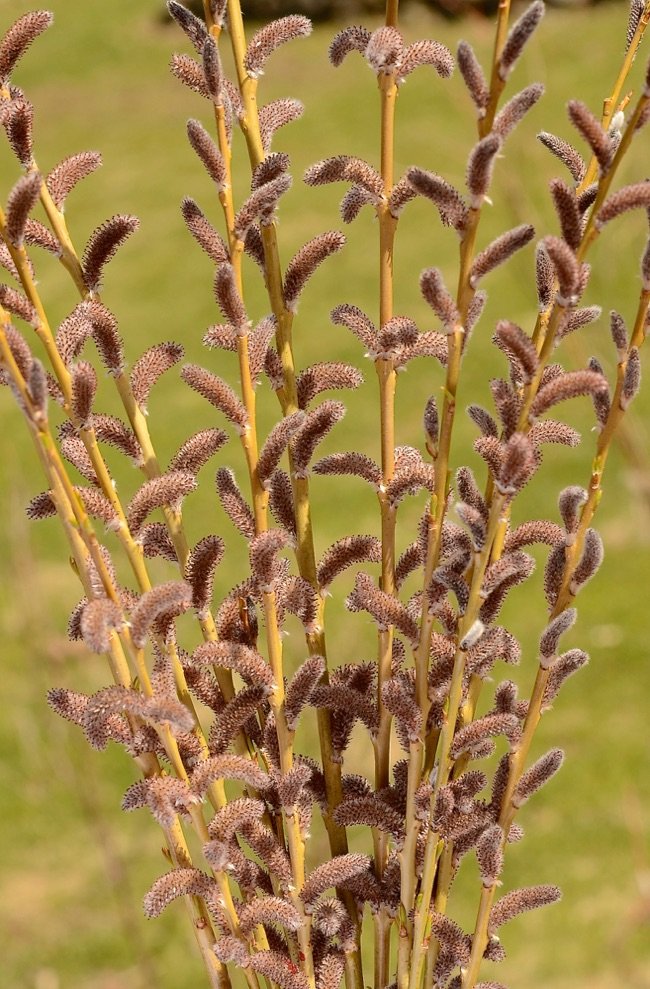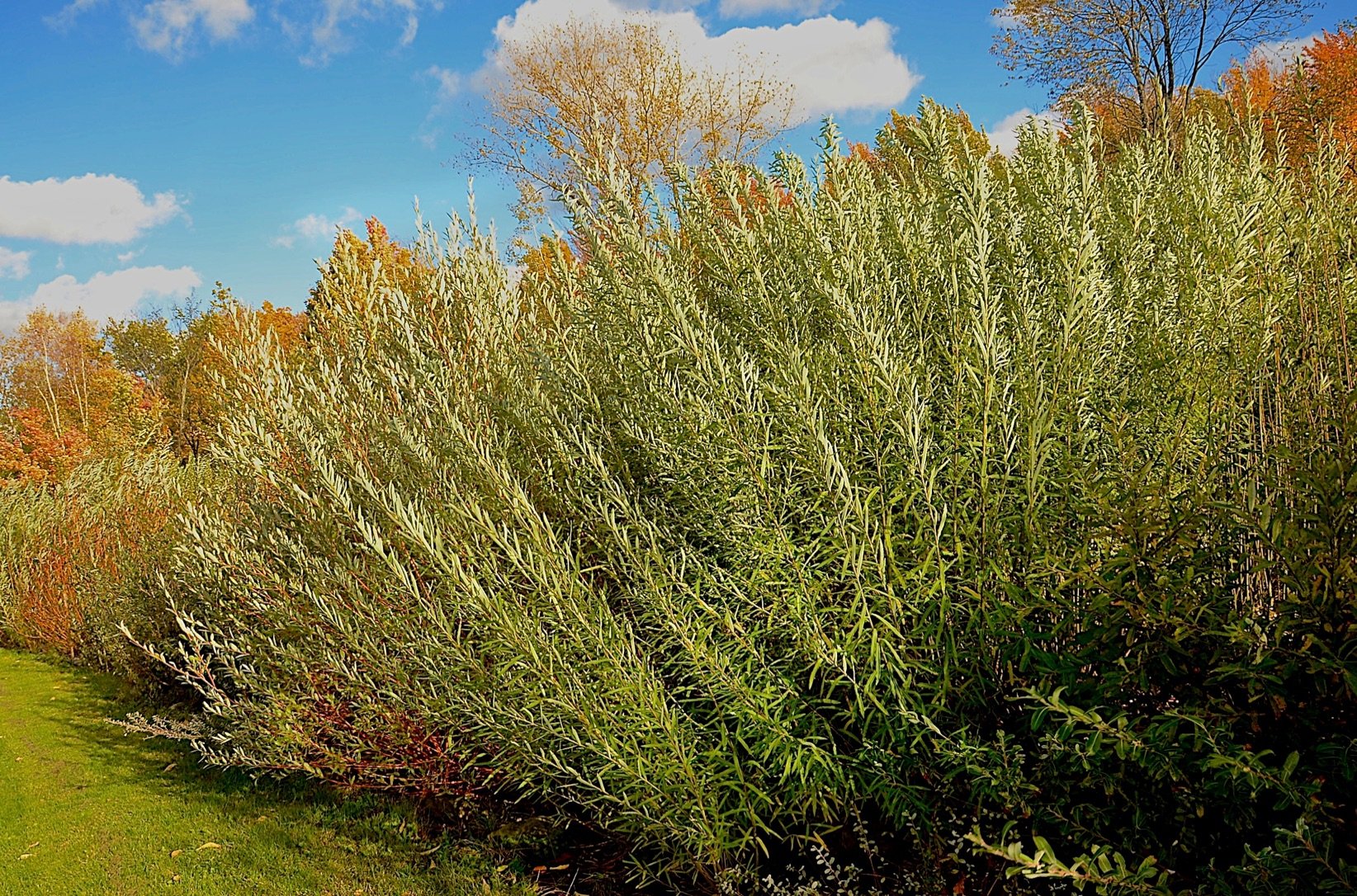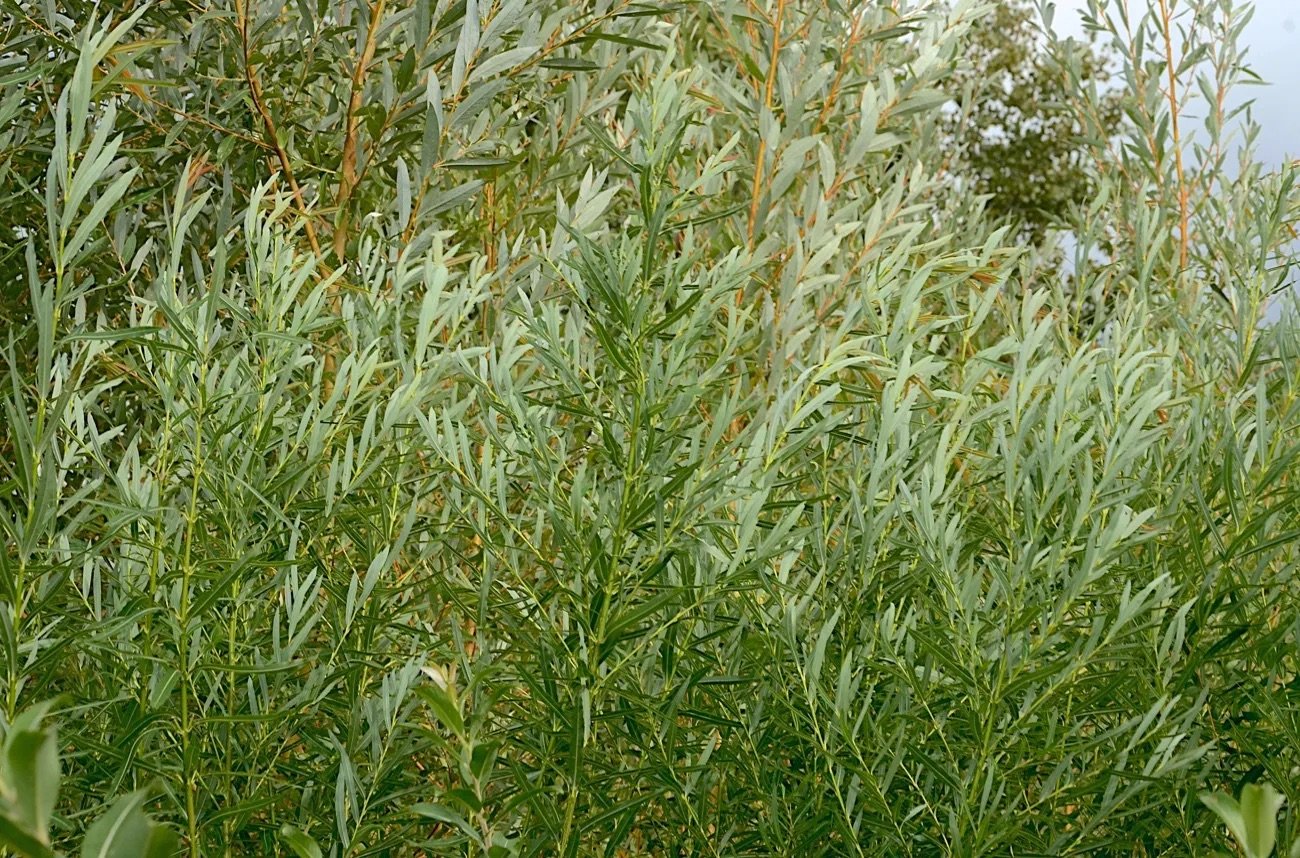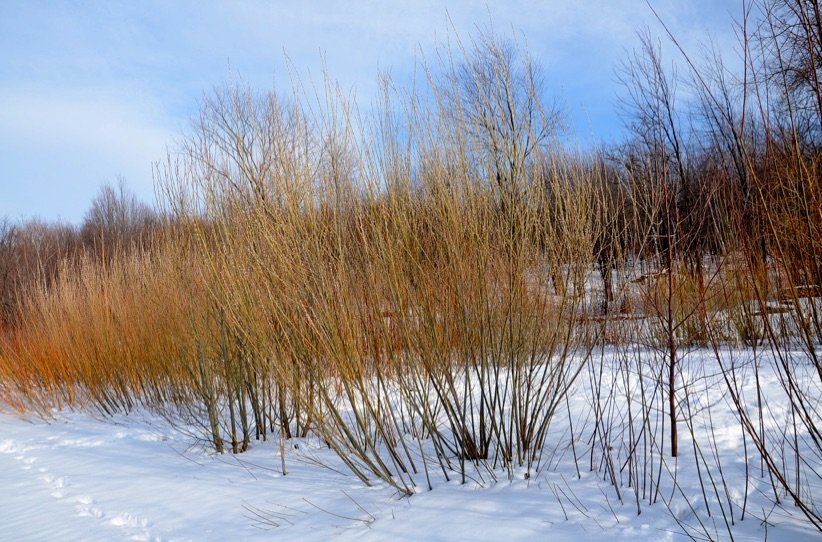Willow
Salix spp. There are hundreds of willow species. Some grow as small shrubs while others are massive trees. Willows are known for their incredible ability to grow under terrible conditions an can often thrive right out of the mud with no top soil. They are huge biomass producers and can be made into baskets and fences, be used as fodder for livestock, help stabilize soils, and provide excellent habitat and food for many of birds and mammals.
These are live willow cuttings, small sticks that are harvested in late winter while the plant is still dormant. They are best planted still dormant and are very easy to root. Simply place in the ground and with good weed control, they will become well established within one growing season. Store in the fridge or a root cellar until the ground thaws or you are ready to plant, just make sure they stay moist.
Rubykins: A variety originally from Korea; produces long flexible green stems with attractive leaves, great for basket making and living structures. One of the easiest to establish. Deer resistant.
Useful: From Twisted Tree Farm in NY. They write “…shrubby willow that we have been using for everything from erosion control to living structures to biomass production. This willow was found growing wild by us. We have been unable to identify it. It grows 12-15' at maturity, and produces copious amounts of strong, flexible, uniformly sized, green stems.” We’ve seen this put on 6’ in a dry year after being cut early in the season.
Sold as live cuttings in bundles of 5 at 7-10” length OR individually as 6-8” tall rooted cuttings.
Salix spp. There are hundreds of willow species. Some grow as small shrubs while others are massive trees. Willows are known for their incredible ability to grow under terrible conditions an can often thrive right out of the mud with no top soil. They are huge biomass producers and can be made into baskets and fences, be used as fodder for livestock, help stabilize soils, and provide excellent habitat and food for many of birds and mammals.
These are live willow cuttings, small sticks that are harvested in late winter while the plant is still dormant. They are best planted still dormant and are very easy to root. Simply place in the ground and with good weed control, they will become well established within one growing season. Store in the fridge or a root cellar until the ground thaws or you are ready to plant, just make sure they stay moist.
Rubykins: A variety originally from Korea; produces long flexible green stems with attractive leaves, great for basket making and living structures. One of the easiest to establish. Deer resistant.
Useful: From Twisted Tree Farm in NY. They write “…shrubby willow that we have been using for everything from erosion control to living structures to biomass production. This willow was found growing wild by us. We have been unable to identify it. It grows 12-15' at maturity, and produces copious amounts of strong, flexible, uniformly sized, green stems.” We’ve seen this put on 6’ in a dry year after being cut early in the season.
Sold as live cuttings in bundles of 5 at 7-10” length OR individually as 6-8” tall rooted cuttings.
Salix spp. There are hundreds of willow species. Some grow as small shrubs while others are massive trees. Willows are known for their incredible ability to grow under terrible conditions an can often thrive right out of the mud with no top soil. They are huge biomass producers and can be made into baskets and fences, be used as fodder for livestock, help stabilize soils, and provide excellent habitat and food for many of birds and mammals.
These are live willow cuttings, small sticks that are harvested in late winter while the plant is still dormant. They are best planted still dormant and are very easy to root. Simply place in the ground and with good weed control, they will become well established within one growing season. Store in the fridge or a root cellar until the ground thaws or you are ready to plant, just make sure they stay moist.
Rubykins: A variety originally from Korea; produces long flexible green stems with attractive leaves, great for basket making and living structures. One of the easiest to establish. Deer resistant.
Useful: From Twisted Tree Farm in NY. They write “…shrubby willow that we have been using for everything from erosion control to living structures to biomass production. This willow was found growing wild by us. We have been unable to identify it. It grows 12-15' at maturity, and produces copious amounts of strong, flexible, uniformly sized, green stems.” We’ve seen this put on 6’ in a dry year after being cut early in the season.
Sold as live cuttings in bundles of 5 at 7-10” length OR individually as 6-8” tall rooted cuttings.





